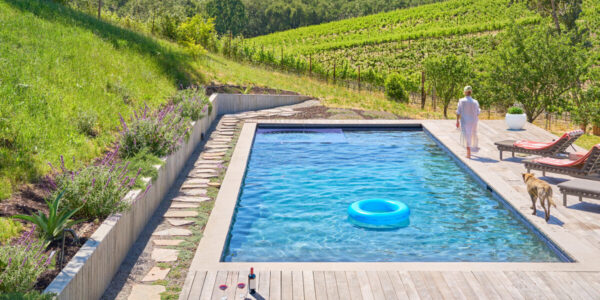
Here’s Exactly How to Prevent Your Plants from Dying When You’re on Vacation
We asked six of our favorite plant shops from all over the West how to take care of botanical buddies while on the road.
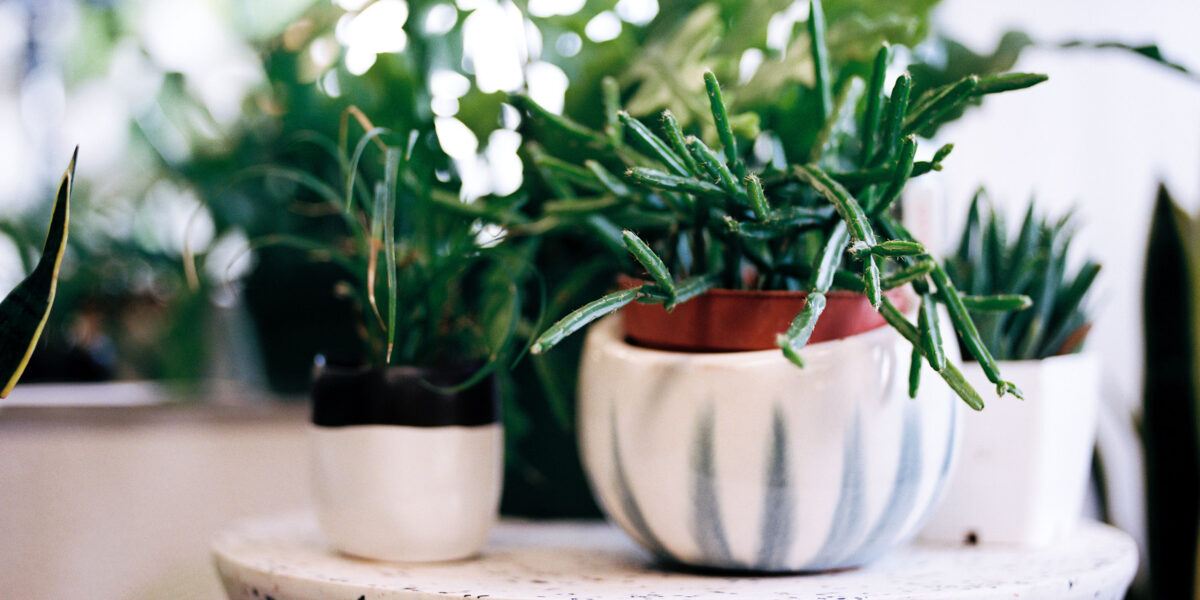
Aspen Torrez
Just because our attention is focused on keeping things steady (ahem, alive) in the garden this deep into the summer, it doesn’t mean we should neglect our leafy loved ones who live indoors—especially if you have travel plans! Houseplants have special needs every season, but summer heat and time away come with their own set of challenges.
I reached out to six of my favorite plant shops from all over the West (yes, even in Alaska) to share location-specific tips on how to keep your plant posse happy and healthy this season. From grouping them together to create humidity, to drawing the blinds to diffuse sunlight, and most importantly, resolving not to freak out upon return—this is how to prep before your trip. They’ve even included their current favorite plants just in case you’re looking to add to your own collection… but maybe that’s a better idea for after you return from your travels.
Whether you’re jet-setting or just need some extra guidance, here are the best ways to take care of your houseplants this summer.
For California: Think About Your Microclimate
Andrew Alvarado, houseplant buyer at Flora Grubb Gardens in Los Angeles and San Francisco, advises to look into the specifics of care by getting as hyper-localized as your neighborhood’s unique microclimate. Depending on if you’re coastal or inland, plants will need to be watered either more or less frequently. “In areas with abundant fog and cool weather you might need to water less often, while in sunny or warm locations, you might want to try pulling them into slightly darker and cooler locations to limit watering,” he says. “For thirsty plants or those in small containers, filling a saucer with about ½-inch of water will give the plant a little reservoir to draw upon.”
Most importantly, if they look a little defeated when you return home, “Don’t panic! Most plants just need a good soak and they’ll bounce back in a day or two. Resist the urge to increase your watering frequency, which could cause more harm.”
Andrew’s Plant Pick: “Philodendron ‘Red Sun!’ The vibrant gradation of color from red to yellow to green has us mesmerized. Also, it doesn’t hurt that most philodendrons are super forgiving of long stretches without water, as long as they get thoroughly soaked in between,” he says.
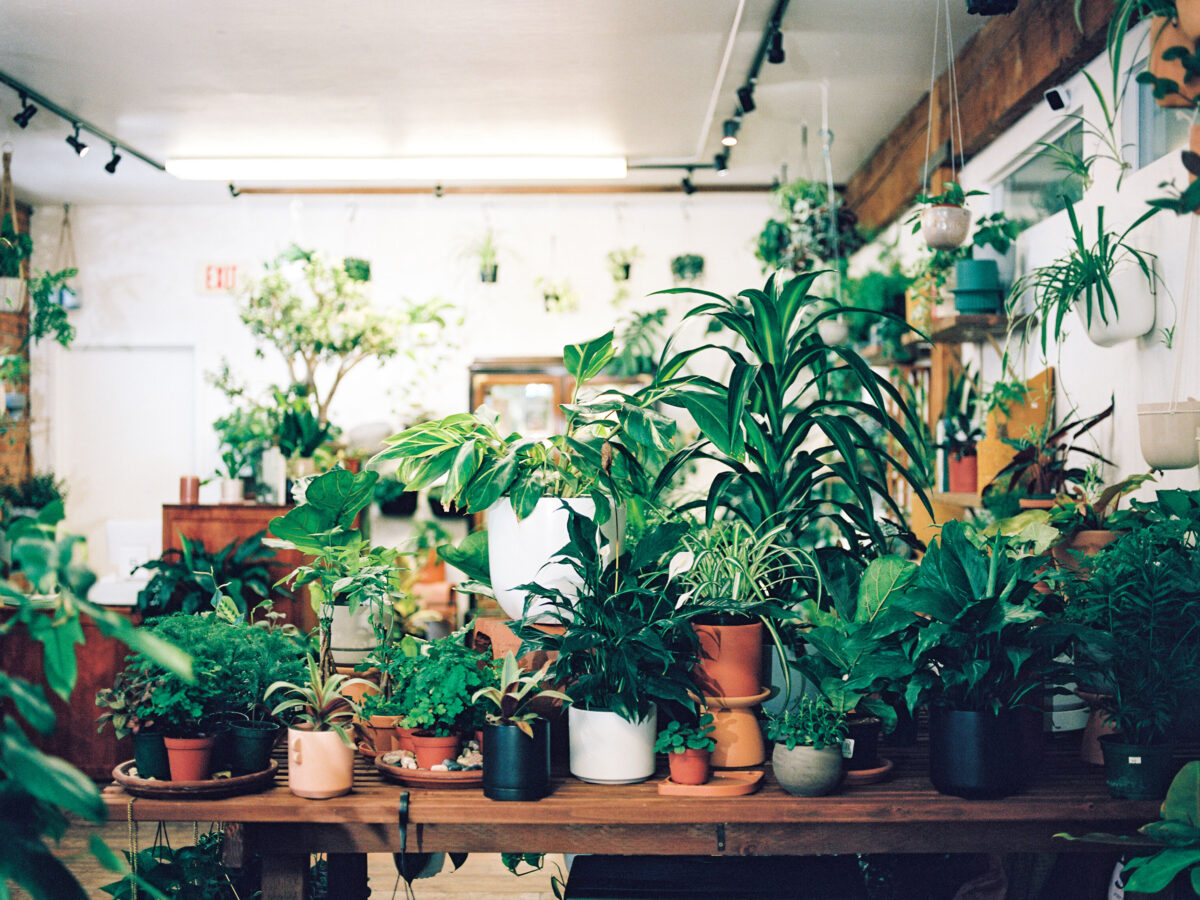
Aspen Torrez
For Hawaii: Consider Humidity and Heat
Humidity and heat are the main factors to consider with houseplants in Hawaii. Courtney Monahan, owner of Paiko Botanicals in Honolulu warns, “If you water a plant as you are shutting your windows, turning off your air conditioning, and walking out the door for a day or two, your plant will get that humid ‘can’t dry off’ feeling, which could lead to your plant rotting while you are away. I suggest watering your plant the day before you leave for your summer vacay!”
Upon return, she encourages you to not freak out if things look a little worse for wear. “Don’t drown them with your love (aka water) and don’t put them outside for sun if they have never been outside in the sun before,” she says. “Water them lightly, maybe put them in the sink or shower and let the water run on the leaves; let them hang out there for a bit where you monitor their recovery.”
Courtney’s Plant Pick: “Currently loving my begonias! I like choosing a colorful, textured, or even patterned pot to house it for a burst of all the colors!”
For the Pacific Northwest: Water Beforehand
The PNW is known for long days and some especially hot periods, and Jarrod Bouchie, of Pistils Nursery in Portland, Oregon, says it’s all about that pregame watering for most of his plants. He suggests watering heavily before leaving on your trip and pulling the plants away from the windows. “With less light, the plants will use the water less quickly. If I can’t move the plants, I just pull the blinds down and angle them so the sunlight is at about 50%,” he says.
Jarrod reminds us to tend to those outdoor potted plants before traveling, too. “If you have any patio plants, water them and tuck them in your entryway or garage until you’re back and can water them again,” he explains. “They won’t love being inside and in the dark, but it’s better than letting them dry out completely while you’re traveling!” For those feeling the anxiety of abandoning sentimental plants, Jarrod encourages you to leave one or two finicky plants with a friend or coworker along with specific care instructions.
Luckily, even the most sensitive houseplants have strong roots. Jarrod tells us that even notoriously difficult maidenhair ferns have strong and resilient root structures that help the plants survive brief periods of drought. Upon return, cut any dead fronds back to the base, fully saturate the soil, and wait a week for any signs of new growth.
Jarrod’s Plant Pick: “Right now, my favorite houseplant is Anthurium veitchii, the King Anthurium. These plants have an unusual leaf texture and they don’t need a lot of special care. I love these plants in rustic terracotta pots, using our Aroid Mix soil which has lots of bark, perlite, and charcoal mixed into regular potting soil to make little air pockets that this plant needs to thrive.”
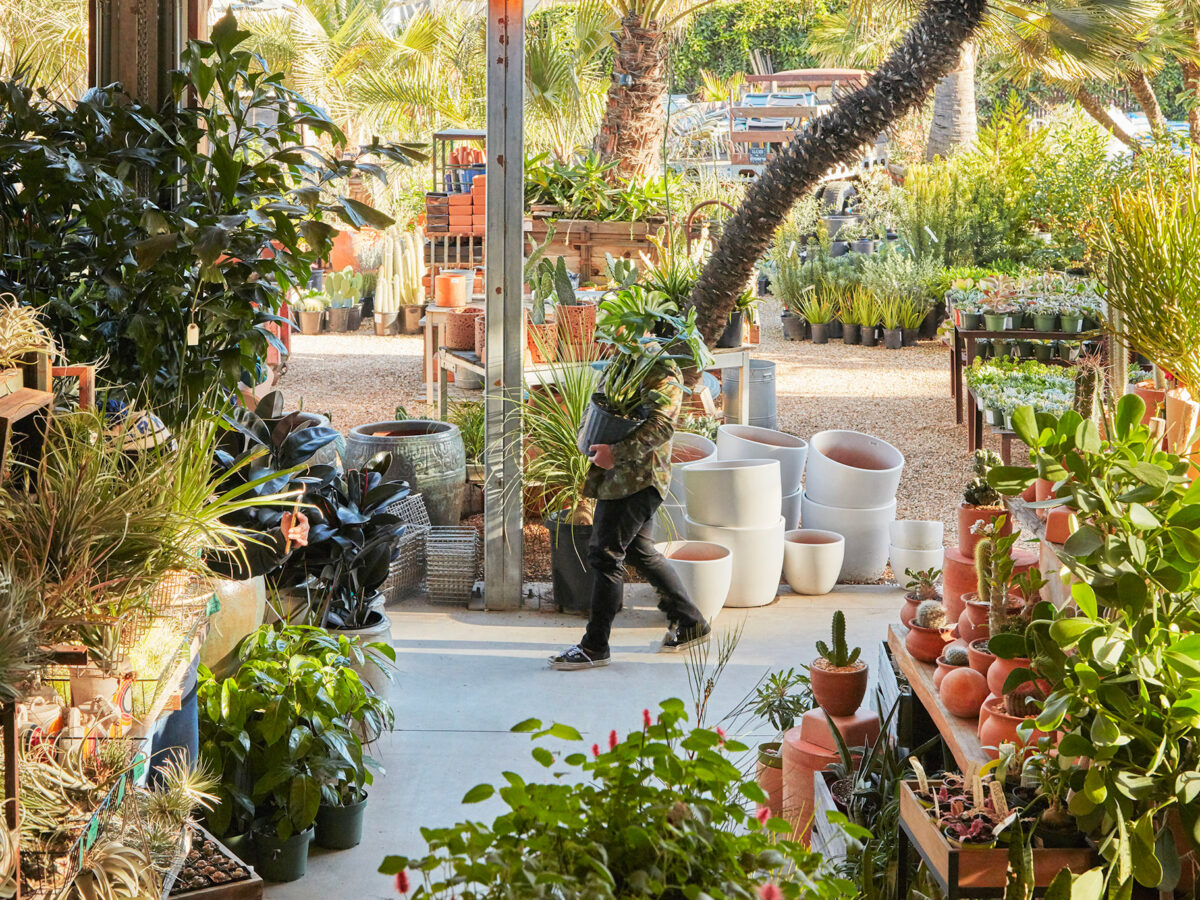
Caitlin Atkinson
For the Southwest: Prep but Don’t Drastically Change Routines
Puebo owner Michael Loan is an avid traveler who enthusiastically tries to leave Phoenix often in summer, and has discovered some of the best summer travel tips firsthand. In this dry climate with temps reaching above 110°F often, it is most important to water plants a healthy amount before leaving and not to over-adjust the AC upwards, suggesting 84°F or below works wonders as does dimming the room just a bit with curtains or blinds.
Plants appreciate normality and routine, and Michael tells us that he tries not to change too much or over-nurture before a trip and is always surprised at how well plants do for an extended period of time during travel. “I find creating a water-wick from an old string or cloth helps my most sensitive ones thrive. I also almost always aerate the soil gently and then do a deep soak in the shower after fertilizing them,” he says. Upon return, subtle changes are best. Don’t rush in and resoak everything or try to overcompensate for a few lost or wilted leaves as plants change and adapt very well. Over-correcting is a surefire way to stress them out even more.
Michael’s Plant Pick: “I am currently obsessed with Rhipsalis in a unique hanging planter; they’re a very unique thin jungle cactus genus with a lot of variety. We have half a dozen in our display window right now contrasting wonderfully in a variety of planters from Australian design company, Angus & Celeste.”
For Mountain West: Protect Plants from the Sun
The Mountain West’s high-altitude sun is very intense this time of year and Aspen Torrez, owner of Leaf + Quiet in Missoula, Montana, warns that plant foliage can sunburn very quickly. He suggests pulling plants back from windows or blocking direct sunlight with sheer curtains, and encourages you to increase ambient humidity by providing pebble trays, humidifiers, or frequent misting. “Healthier plants have a better chance of thriving, [so] we suggest transplanting into Rosy Soil, which is packed with beneficial microbes, amending with SlowDirt to increase plant and soil immunity to pests and pathogens, and fertilizing with Fish Head Farms soil conditioner. Be sure to provide good drainage!” he recommends.
Upon return, if pests have moved in or multiplied, Aspen suggests treating with AzaMax, and quarantining them from any uninfected plants. “If you come home to sad and droopy plants, take care to rehydrate soil slowly—often dehydrated plants are more prone to root rot so immediately soaking plants can do more harm than good,” he says. “If plants are scorched by too much direct sun or blasted by AC, trim off dead foliage and move to a more appropriate environment, then introduce a fertilization regiment. If a plant looks like it isn’t going to make it, consider salvaging any remaining pieces to propagate a new plant.”
Aspen’s Plant Pick: “My current favorite plant is the Raven ZZ paired with a sand-colored Rancho pot from LBE’s artisanal line.”
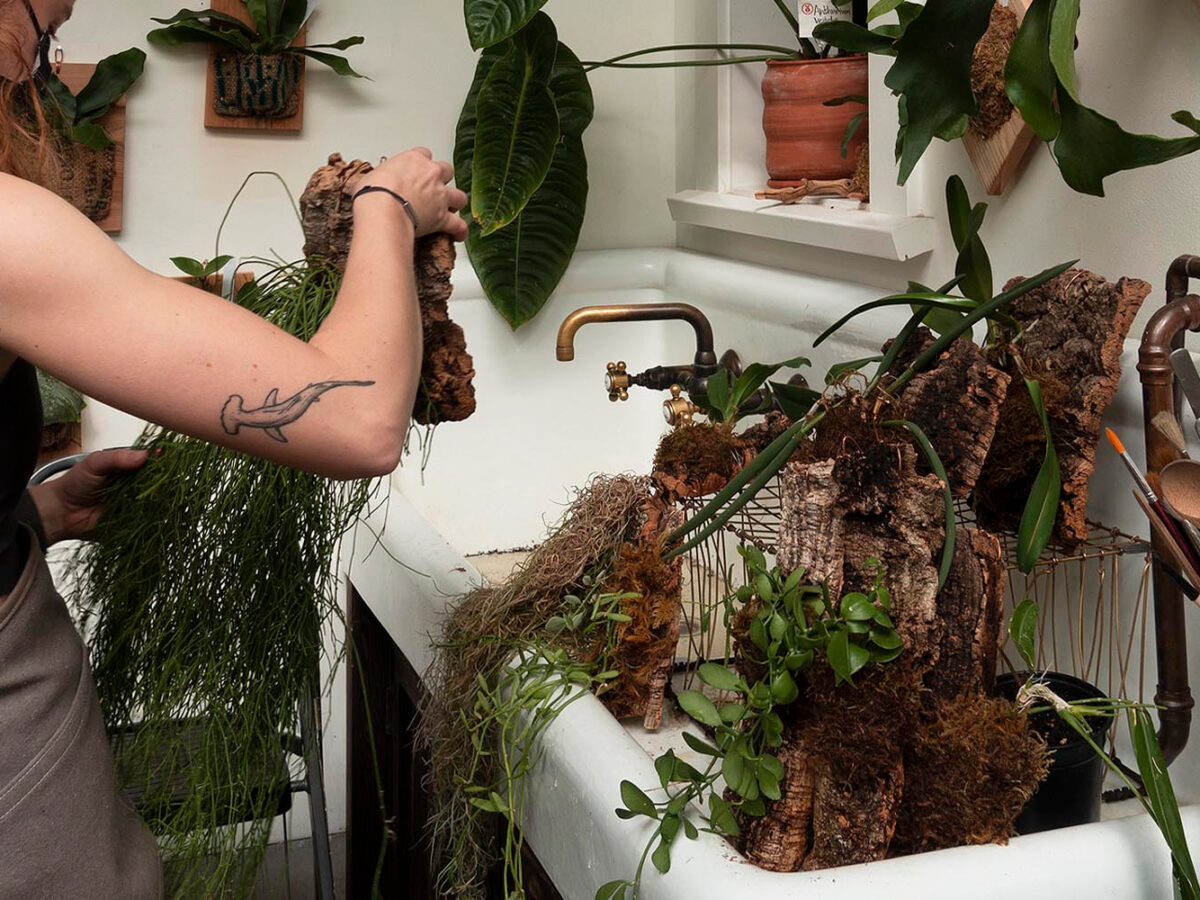
Courtesy of Pistils Nursery
For Alaska: Create a No-Growth Environment
Alaska presents a unique climate for plants with summers characterized by high humidity and extended periods of bright sunlight, with the sun barely setting for months. Tanya and Carson, owners of That Feeling Co. in Anchorage, Alaska, advise, “If travel plans extend beyond two weeks, we suggest implementing a few adjustments to create a dormancy or no-growth environment. One way to achieve this is by minimizing sunlight exposure in your home. Consider putting shades down or moving your plants to a low-light room. Additionally, grouping plants together can help preserve humidity.”
If you come back from your travels and find that your plants aren’t looking their best, the duo recommend giving them a good soak as it usually takes a few days for plants to fully recover. “Don’t be alarmed if they don’t perk up right away. Be patient and allow them some time to bounce back,” they say.
Tanya and Carson’s Plant Pick: “Philodendron pedatum, because of how well-suited most Philodendron varieties are for the Alaskan climate. The Philodendron pedatum, in particular, stands out with its distinct foliage, going beyond the typical heart-shaped leaves. You can’t go wrong pairing with a classic ceramic pot that provides proper drainage.”
